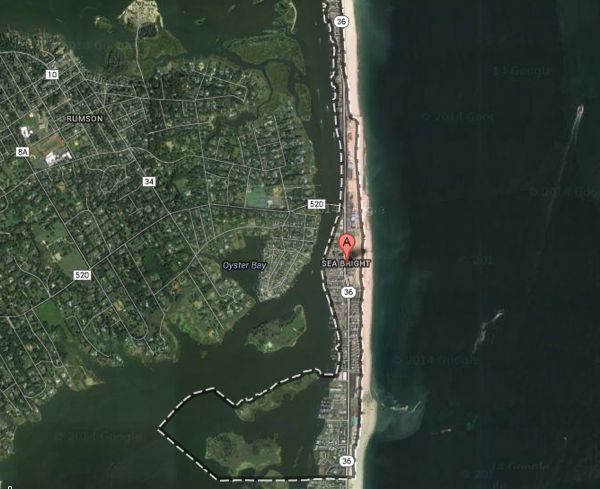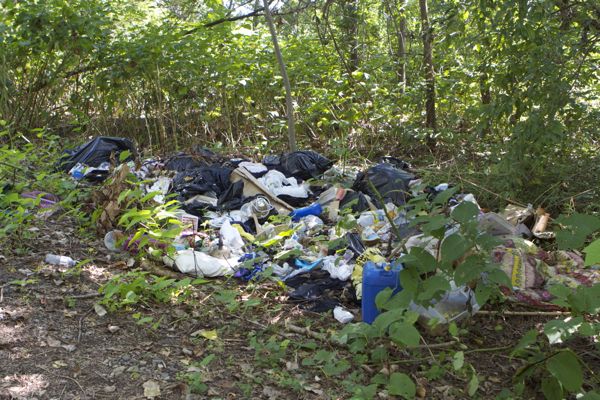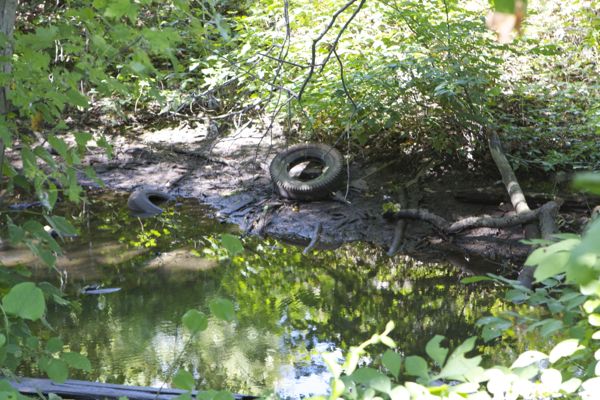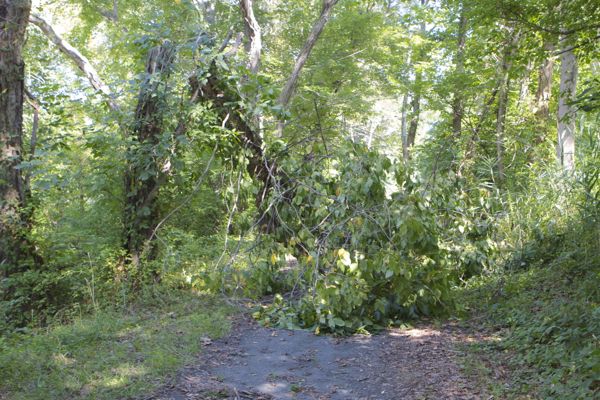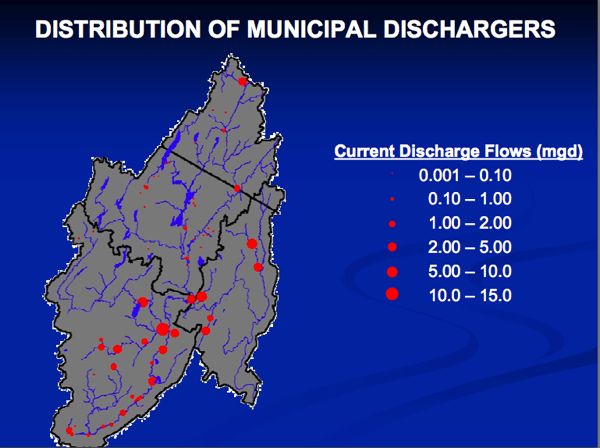NJ State & Local Officials Harshly Criticized for Lack of Preparation & Poor Response
DEP Responders Look Out For Their Own, While Misleading Public on Health Risks
DEP “will not be responding until the area is secure”
From day one, we strongly criticized the emergency response, the limited evacuation, and especially the false and misleading information provided by government officials to the media and the community about the health effects and risks of the chemicals involved.
The National Transportation Safety Board (NTSB) issued their Final Report on the Paulsboro toxic train derailment (I strongly recommend that you read the full Report here).
There is particularly important information buried in the chronology presented in Appendix B, which I will focus on today.
As we previously outlined, the Report presents a devastating critique of multiple failures by Conrail as well as federal, state, and local regulators and first responders. However, the Report ignores or superficially presents some important issues, and the recommendations fall short on the needed strong statutory and regulatory reforms.
The NTSB Report also vindicates our multiple criticisms – which went unreported by the media in real time – with one exception.
We knew that emergency responders were providing incomplete and at times false information about the chemicals and health risks involved and had failed to evacuate the exposed community as required by federal guidelines.
But, because some of this false information appeared to have come from incident Command, we (mistakenly) assumed that those mistakes were made by the CTEH, a consultant to the incident Commander (The US Coast Guard), or the US EPA.
The NTSB suggests that that was not the case, that the early errors came mainly from local fire and police emergency responders, and the Department of Environmental Protection. We apologize to CTEH and EPA for our mistaken assumptions.
So, I thought I’d focus on a few of the more egregious failings and issues, most of which are being misrepresented or ignored in press coverage – via excerpts of the NTSB Report. In some cases, media coverage is so bad, it is making heroes out of those that should be villains, pilloried, and held accountable.
- Initial false reports needlessly exposed community – compounded by DEP errors that downplayed risks
The NTSB found:
About 7:30 a.m., police radio transmissions suggested that the vapor cloud was “nontoxic.” The police then changed the evacuation orders from mandatory evacuation to shelter-in-place. The police department did not become aware that vinyl chloride had been released until 8:30 a.m., just before the first incident command briefing. The situation was further confused when, at 10:30 a.m., the NJDEP publically (sic) announced that the hazard had dissipated. Therefore, the community protective measures were based on incorrect information about the released material.
… The NTSB concludes that the dissemination of inaccurate public information about the release of vinyl chloride revealed the lack of an effective system for communicating to the public accurate information about the current situation following the accident. (@ page 41)
Let’s be very clear about what went on here.
1) The local police made a huge mistake. On the basis of that mistake, they reversed an evacuation order and failed to evacuate the community. This error resulted in emergency responders and the public being exposed to high and unsafe levels of extremely toxic vinyl chloride gas that could lead to irreversible and permanent health effects, including cancer.
2) The DEP – unlike the local police, who are supposed to be experts – made a erroneous public announcement that had no scientific basis and contradicted their own experts and available data (more on that when I discuss the chronology from Appendix B).
[Note: Because the NTSB Report chronology was limited to the first 24 hours, it fails to report additional false and misleading information distributed to the public and the press by DEP.]
- NJ State government has abdicated to incompetent local government
The NTSB analysis of State oversight of local efforts, State Hazard Planning, and State government’s emergency response delicately dances around the responsibilities and role of State government and existing State government programs and resources.
They compound this weakness by ignoring the policy of the Christie administration with respect to regulatory oversight, enforcement, and delegation to local government.
NJ has important and relevant State laws, programs, and resources to manage chemical safety and emergency response that are far broader and stringent than federal laws, including NJ’s Right to Know Act, Toxic Catastrophe Prevention Act, and Spill Compensation & Control Act.
DEP cut its teeth and established nationally recognized expertise, credibility, and a leadership reputation in emergency response, risk communication, risk assessment, risk management, and chemical safety – from the Chemical Control fire to the Napp Technologies explosion.
These State laws, programs, and resources are completely ignored in the NTSB Report.
Worse, NTSB misleading portrays NJ’s “home rule” tradition as an inflexible function of State law instead of a voluntary choice of policy, a practice of State abdication that is exacerbated by Gov. Christie’s anti-regulatory, antigovernment, and hand off local delegation policy expressed by Executive Orders #2 (“regulatory relief”), #3 (“red tape”), and #4 (no State government imposed “unfunded local mandates”).
NTSB was highly critical of the NJ State Office of Emergency Management, including their failure to oversee local emergency management plans, which is something we have written about several times, in the context of Sandy, Bakken crude oil shipments, and the Paulsboro derailment.
NTSB found:
These statistics indicate that many communities in the state still do not have NJSP-OEM-approved EOPs and that these communities are likely unprepared for emergencies that could occur in their jurisdictions, as was the Paulsboro community. This problem is amplified by New Jersey home rule laws that keep authority for managing an incident at the lowest local government level, thus discouraging regional and state authorities from intervening in an incident, even when faced with obvious response deficiencies.
… The NTSB concludes that had the borough of Paulsboro [or NJ OEM] performed an assessment of the emergency response needs and capabilities for the hazardous materials that are present and transiting through its community, it would have been apparent that the emergency response capabilities and plans were inadequate for the types of high consequence incidents that can occur in the jurisdiction. (@ p.51-52)
The NTSB fails to note that is Christie policy that “amplified” NJ’s “home rule” tradition.
This NTSB finding on State oversight should drive changes to strengthen NJ State law to put OEM firmly in charge and to better define emergency preparedness, planning, and response requirements.
- EPA and DEP failed miserably
Despite the fact that both US EPA and NJ DEP were on scene for several hours and were fully aware of the hazards posed by the vinyl chloride gas plume, the NTSB Report found:
Fact-based decisions regarding the community exposure did not occur until the unified command was established at 1:00 p.m., when the federal on-scene coordinator directed more information to be gathered about community exposures. (@ p.42)
EPA and DEP were on scene before 9 am and fully aware of hazardous conditions (see chronology in Appendix B).
Yet they sat back and failed to over-ride serious local errors – other than to make things worse by DEP’s providing false information – as local officials made mistakes, misled the public and the press, and allowed emergency responders and the community to be needlessly exposed.
- DEP failures were the result of a “protect our own” first – the hell with the public mentality
I was sickened by reading these excerpts in the response chronology provided in Appendix B. They show that DEP knew about risks but cared more for their own staff than the community.
According to the chronology, DEP first learned of the accident at 7:40 am – why did it take 40 minutes to notify DEP?
DEP then responds as follows, showing utter disregard for public safety and a selfish disposition to “protect their own”:


 Too bad the public and the press and local emergency responders didn’t have the info that DEP had.
Too bad the public and the press and local emergency responders didn’t have the info that DEP had.
So much for the hero myth about running into the burning building. DEP “will not be responding until the area is secure”.
- Despite major flaws in voluntary & local programs, NTSB fails to recommend strong regulatory measures
In a section of the report about private industry “voluntary” programs, NTSB recognized the huge risks in Paulsboro and expected that officials would recognize these risks, but failed to do so:
Like many small fire departments throughout the country, the Paulsboro Fire Department was unprepared for large-scale hazardous material emergency responses. The frequency of hazardous materials train traffic through the borough would have suggested a higher level of awareness and preparedness. The firefighters need to understand how to respond to incidents involving such hazards and advise the community on whether to evacuate or shelter in place if a release does occur. (@p.47)
But NTSB did not address state responsibilities or recommend that these voluntary programs be made mandatory via regulation, despite this finding:
In addition to TRANSCAER, many railroads have their own voluntary outreach and assistance programs for emergency response organizations in the communities along their routes. However, these programs are usually limited to emergency responders, not the public. Furthermore, the voluntary programs seldom include requirements for evaluating the efficacy of these programs. (@p.48)
Despite recognizing effective mandatory federal risk management and emergency planning requirements (e.g. EPCRA), the NTSB regulatory recommendations did not consider expansion of these program, but instead relied on far weaker pipeline safety programs:
The NTSB recommends that PHMSA require railroads transporting hazardous materials to develop, implement, and periodically evaluate a public education program similar to that required for pipeline operators under 49 CFR Parts 192.616 and 195.440 for the communities along railroad hazardous materials routes.
Despite these incredibly strong findings, NTSB failed to recommend that this massive loophole be closed:
Unlike stationary or fixed facilities, railroads transporting hazardous materials are not required to work with communities to develop emergency plans. A fixed facility with a threshold quantity of a material designated as an extremely hazardous substance, as defined under 40 CFR 355, has significant obligations to the LEPC for both emergency planning and release notification.43 The facility emergency planning responsibilities include providing emergency planning notification to the LEPC and SERC, providing an emergency coordinator who will participate in the local emergency planning process, providing notice of any changes occurring at the facility that may be relevant to emergency planning, and, most importantly, providing any information necessary to develop and implement the emergency plan. This information typically includes the type and quantity of the hazardous materials as well as other relevant data.
Although EPCRA defines “facility” to include railroad rolling stock, Congress provided the following exemption (U.S.C. 2009):
Except as provided in section 11004 [Emergency Notification] of this title, this chapter does not apply to the transportation, including the storage incident to such transportation, of any substance or chemical subject to the requirements of this chapter, including the transportation and distribution of natural gas.
Therefore, railroads are exempt from the EPCRA requirements to work with local emergency responders and the LEPCs or SERCs for emergency planning.
The absence of any federal requirements for railroads to assist with local emergency planning leaves communities unprepared for hazardous materials releases. The issue is even more significant when the threshold quantities that trigger the EPCRA emergency planning regulations are examined. The threshold planning quantities for hazardous chemicals used at a fixed facility are often several orders of magnitude less than quantities that are routinely transported through these same communities, frequently to or from the regulated facility. For example, the fixed-facility threshold planning quantity for chlorine is 100 pounds. The train that derailed in Paulsboro was transporting four tank-car loads of chlorine (each with approximately 180,000 pounds of chlorine), more than 700,000 pounds. Although chlorine was not released in this accident, it could have been since it was in a tank car only 14 cars behind the last derailed tank car.
NTSB largely confined their analysis to hazards from “train traffic”, thereby inexplicably ignoring larger risks from the massive chemical industrial complex in the region.
- Local emergency response officials were not only poorly trained and equipped, the REFUSED training
NTSB found that local officials were poorly trained and state oversight was ineffective:
The NTSB concludes that the New Jersey firefighter certification and training requirements were not effective as demonstrated by the failure of emergency responders to conduct operations in accordance with established health and safety protocols and OSHA HAZWOPER standards, and their lack of familiarity with available tools to evaluate toxic exposure threats. (@p.46)
But this is even worse – totally incomprehensible to me – and heads should roll for this irresponsible negligence:
Railroads, including Conrail, express frustration with local emergency responders for a lack of participation in railroad- or TRANSCAER-organized training events. Prior to the accident, TRANSCAER of New Jersey held several free tank car training sessions in and around GloucesterCounty. Training was held at Woodbury RailYard in GloucesterCounty on April 20–21, 2012, 7 months before the accident. This training was sponsored by the Dow Chemical Company, which teamed with Norfolk Southern Railroad, Conrail, the Firefighters Education and Training Foundation, the Chemical Transportation Emergency Center, and many other local supporting agencies to make this educational opportunity available to local responders. However, no members of the Paulsboro Fire Department attended that training.
Someone needs to be held accountable for refusing free training.
- Continuing Failure of Political Leadership
Worse, this negligence was essentially rewarded by local Assemblyman Burzichelli, who shamelessly attacked NTSB and even after the Final Report was released, again attacked NTSB and defended incompetent local officials:
“The NTSB should be a shamed of themselves for ascribing their names to that report,” said Burzichelli, a Paulsboro native and the borough’s former mayor.
It’s Burzichelli who should be ashamed – for selling out his own people and cowering to chemical corporations.
- Regulatory and liability reforms ignored
There are risk management and community hazard planning reforms that can be implemented without legislative change in existing DEP regulatory programs (e.g. TCPA, RTK, EPCRA, Spill Act) – including those similar to the grave to grace approach to the off site transportation scheme required for shipments of hazardous wastes. OEM can beef up local and county requirements as well.
Other reforms, like eliminating the liability cap on accidents require legislation.
All of these were ignored by NTSB.
More to follow on this set of issues.
